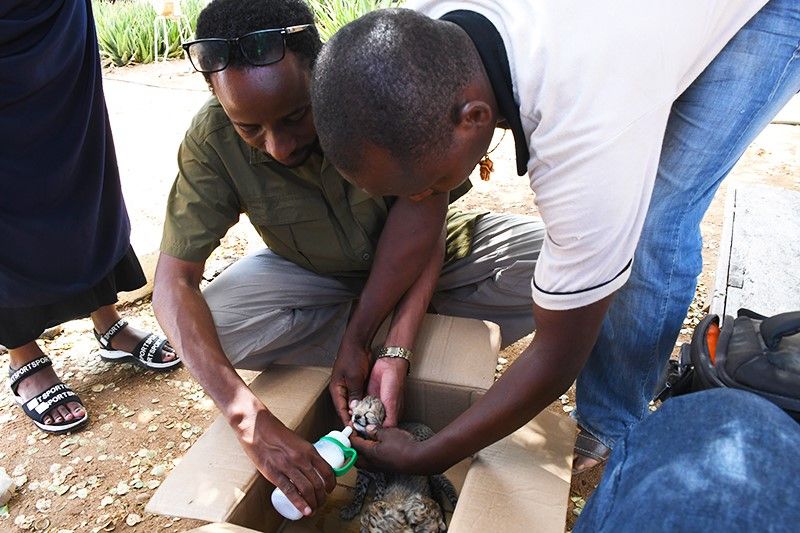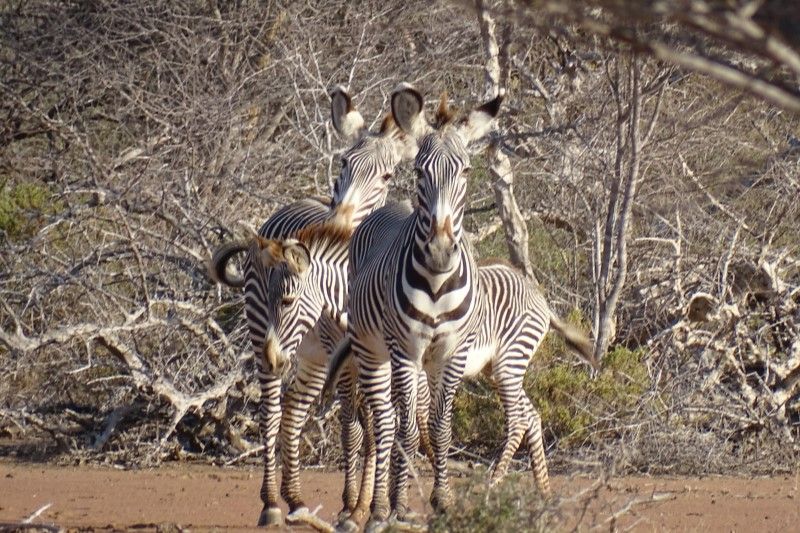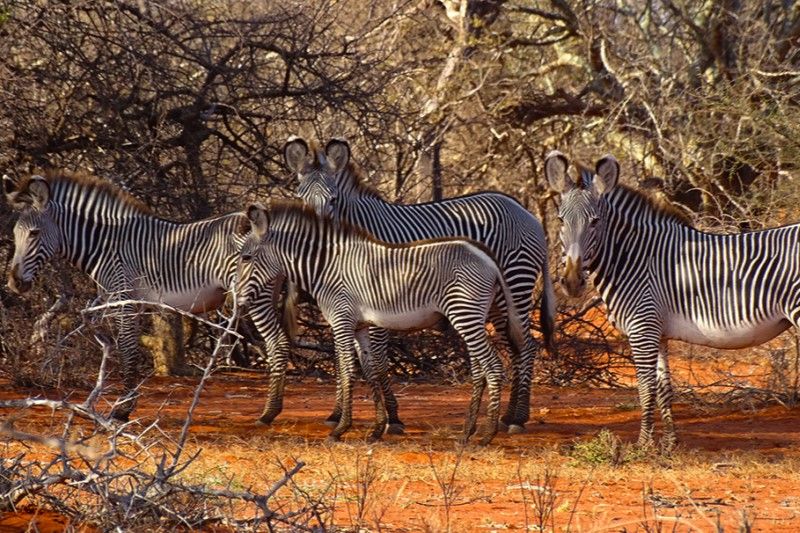The recent drought in Kenya is one of the worst in memory, with failed rainy seasons in three consecutive years. Our colleague Ali and his team have been working tirelessly to save as many animals as possible.
Ali recently sent us an update, including news that the rains have at last arrived. However, there’s been poor regeneration of plants and most crops failed to germinate. The team will have to continue with the drought intervention measures until March, when we hope a long rainy season will begin.
It’s really encouraging to hear what Ali’s already achieved with our supporters generous donations. Thanks to supporter donations, we were able to send emergency funding immediately to Ali, to provide water, fodder and veterinary help so desperately needed by wildlife and livestock.
Water and feed provision
Ali’s team has provided water throughout Garissa County, especially to areas furthest from the Tana River. The water trucks PTES supporters help pay for provided water to over 5,000 households and five wildlife conservancies. Ali and his colleagues constructed and repaired water troughs in areas visited by wildlife and filled them weekly. They supplied hay and nutritious pellets to livestock, and hay, acacia pods and pellets to wildlife; mainly giraffes, antelopes and Grevy’s zebras.
Veterinary treatment and rescue
To help wildlife that had been abandoned, orphaned or injured, Ali established an Animal Rescue, Caregiving and Re-wilding Programme. With pasture in such short supply, pastoralists were forced to find forage for livestock deep into wildlife areas. Many wild animals had to flee the huge herds of cattle, and sadly some young animals were left behind.
Pastoralists targeted predators, such as big cats, in increasingly desperate efforts to protect their livestock. In one case, a female cheetah was chased away from livestock, leaving her four cubs behind. The team rescued them; you can see Ali in the picture, feeding one of the tiny cubs.
Animals in trouble were tracked and brought to Ali, including gerenuk calves, ostrich chicks, an injured adult ostrich and an injured aardvark. They’ll all be released when they’ve recovered. The team also vaccinated 31,400 livestock to prevent catastrophic diseases spreading throughout livestock and across to wild animals.
Reopening historical water points
The Tana River, the longest in Kenya, traditionally provides water for much of the wildlife in the area. As the human population has grown, historic watering points have been blocked by farms and overgrown with invasive plants. In the last ten years, there’s been conflict between farms and wildlife over the water.
Working with the county government, Ali’s team will start reopening these watering points, making water available to wildlife. They’ll work with communities and farmers to clear the invasive shrubs, which will significantly ease farmer-wildlife conflict and give wildlife and communities much needed access to water. What an achievement that will be! Again, thank you to all our supporters helping, this progress will have long lasting benefits for wildlife.
A new herd of Grevy’s zebras
Alongside his amazing efforts to help animals during the drought, Ali’s also continuing to locate and protect Grevy’s zebras, work we’re already funding. They’ve made tremendous progress and discovered a new group of Grevy’s zebras.
The seven zebras were photographed and added to the national database so each individual can be identified in future. A feeding station was put in the area to save them from the terrible effects of drought. With only 80-100 Grevy’s zebras in this entire region, these seven are a welcome find.
We’re so grateful to Ali for his incredible efforts at such a difficult time. And also to all of you, for helping fund his extraordinarily dedicated work. Your donations have helped save animals’ lives.
If you would like to contribute to the drought relief you can do so here:





